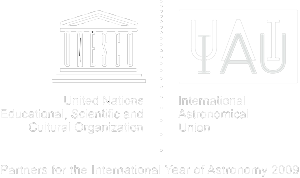Children are naturally fascinated by astronomical phenomena and don’t need much incentive to participate in activities about them, making it a great gateway subject into science and technology. Today astronomy is being taught at an increasing number of primary schools around the world. However, despite the enthusiasm of primary school teachers, the resources for fun, practical activities are not always available and these are an important element in the classroom, especially when tackling complex scientific principles with young children. To combat this problem, and make astronomy part of every child's education, EU-UNAWE have designed an exciting new resource called Universe in a Box!
Universe in a Box is a low-cost activity kit developed by EU-UNAWE and Cecilia Scorza and Natalie Fischer from Haus der Astronomie (House of Astronomy) in Heidelberg, designed to assist teachers and educators in bringing astronomy to the classroom, science centres and planetariums. The toolkit guides educators in how to teach basic concepts within astronomy to young children through fun, hands-on activities and provides the materials and models needed to do them. Five modules are covered by Universe in a Box: the Moon, the Earth, the Sun, the Planets, and the World of Constellations. All necessary background information is included, so no previous scientific training is needed.
This month the project reached the prototyping phase. Fifty prototype boxes (in English) have now been developed and distributed to educators in 29 countries around the world for testing. Recipients are expected to utilise the boxes and provide feedback within the next two months. They will comment on the effectiveness of materials, age indication, relevance of background science and clarity of activity guides, including any proposed changes. Additionally, we will be collecting feedback relevant for localized development, such as specific hemispherical, cultural or curricula needs, to allow us to tailor the boxes specifically to each region, to ensure the box reaches its full potential worldwide. Users are also invited to add their own favourite astronomy activities to the handbook and materials to the box.
Jaya Ramchandani, the Universe in a Box project manager, tells us: “Universe in a Box is simple enough to be adapted to different countries and contexts. In my demonstrations so far (in Mumbai, India), both the children and teachers have been thrilled with the activities. Astronomy so far does not feature on the primary school curriculum here. It's really great that a resource developed in one part of the world is being shared across the globe."
Universe in a Box will be available to order within 2 months. By the end of this year, we hope to have 1000 boxes distributed to 1000 schools. Watch this space to find out how you can get a box of your own.
If you would like to try the Universe in a Box activities yourself, the full handbook is available free online here or if you would like to learn more about the project visit the UNAWE website: www.unawe.org.
“One of Earth's most valuable natural resources is the spectacular night sky, it has amazing educational potential for children from all nations and cultures," says Natalie Fischer, who developed the concept of Universe in a Box. "The box gives teachers a way to bring the night sky into the classroom.”













